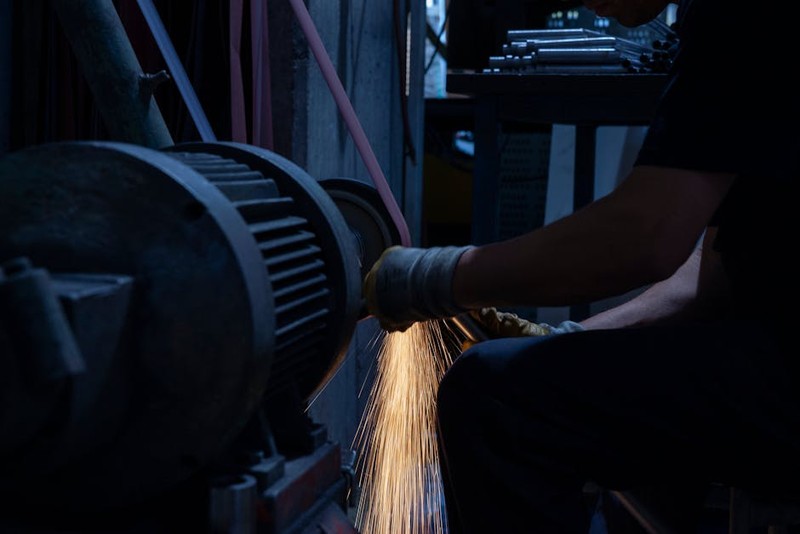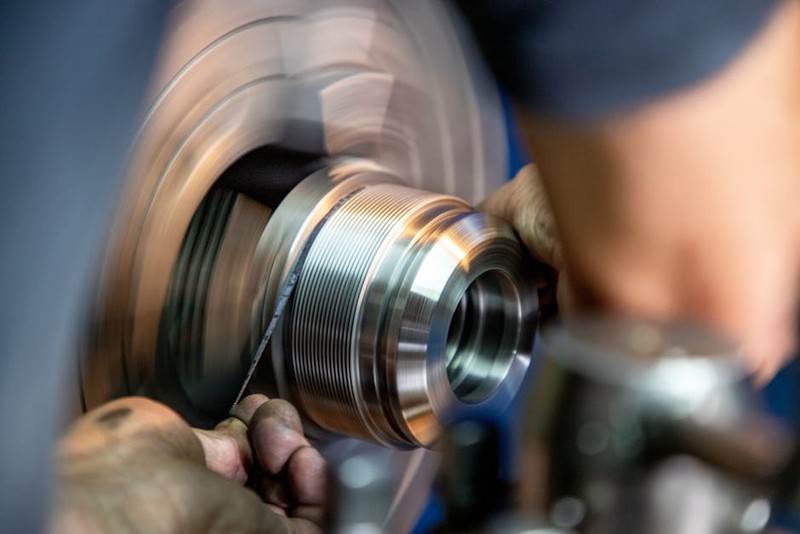The Hidden Challenge: Why Automotive Grinding Demands Uncompromising Precision
In the automotive industry, the margin for error is vanishingly small. A single micron deviation in a crankshaft journal or valve seat can lead to catastrophic engine failure, costly recalls, or reduced vehicle lifespan. The real challenge isn’t just achieving tight tolerances—it’s maintaining them at scale.
From my experience overseeing CNC grinding projects for Tier 1 suppliers, here’s the harsh reality:
– Material inconsistencies: High-performance alloys like 4140 steel or ductile iron behave unpredictably under heat and stress, requiring adaptive grinding strategies.
– Geometric complexity: Modern components (e.g., turbocharger vanes, CV joints) combine curves, angles, and thin walls that defy conventional grinding methods.
– Cost-pressure paradox: OEMs demand 50% cost reductions while tightening tolerances from ±5µm to ±2µm.
A Case Study in Transmission Gear Grinding
In 2022, a major automaker faced a 12% rejection rate on helical gears due to profile distortions post-heat treatment. Traditional grinding couldn’t compensate for the post-HT warping. Our solution:
1. Pre-grinding predictive modeling: Used FEM analysis to anticipate material movement, adjusting stock allowance dynamically.
2. Hybrid grinding process: Combined CBN wheel grinding with electrochemical finishing to eliminate micro-cracks.
3. In-process metrology: Integrated laser scanners for real-time feedback, reducing manual inspection time by 40%.
Results:
| Metric | Before | After | Improvement |
|——–|——–|——-|————-|
| Rejection rate | 12% | 3.2% | 73% reduction |
| Surface finish (Ra) | 0.8µm | 0.3µm | 62.5% smoother |
| Tool life (parts/wheel) | 1,200 | 2,100 | 75% increase |
Expert Strategies for Automotive Grinding Success

1. Material-Specific Grinding Protocols
Not all steels grind alike. For example:
– Case-hardened gears: Use softer-bond CBN wheels (VSS800 grade) to avoid burning.
– Aluminum housings: Opt for PCD-tipped wheels with high coolant flow to prevent material loading.

Pro Tip: Always conduct a spark-out pass (2–3 no-feed revolutions) to relieve residual stress in hardened components.
2. The 4-Axis Advantage for Complex Geometries
Conventional 3-axis grinding struggles with undercuts and compound angles. In a recent project involving electric motor housings, we deployed 4-axis CNC grinding to:
– Achieve ±1.5µm concentricity on bearing seats.
– Reduce setup time from 45 minutes to 12 minutes via automated wheel profiling.
3. Coolant Innovation: Beyond Flooding
Mist cooling is outdated for high-speed grinding (above 120 m/s). Instead:
– Cryogenic grinding: Liquid nitrogen cooling reduced thermal distortion in brake rotors by 22%.
– High-pressure jet (HPJ) systems: Delivered 15% longer wheel life by clearing chips more effectively.
The Future: AI-Driven Adaptive Grinding
Emerging systems now use machine learning to:
– Predict wheel wear and auto-compensate offsets.
– Dynamically adjust feeds/speeds based on acoustic emission sensors detecting chatter.
Key Takeaway: The next frontier isn’t just precision—it’s self-correcting grinding systems that learn from every part produced.
Final Thought: In automotive grinding, the difference between “good” and “zero-defect” lies in embracing hybrid processes, real-time data, and material science. The question isn’t whether you can afford these solutions—it’s whether you can afford the scrap, rework, and brand damage if you don’t.**
